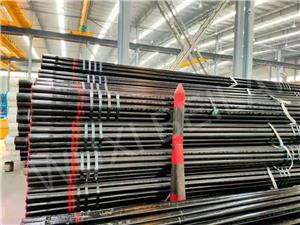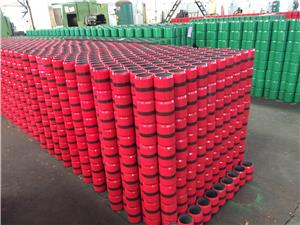How does the performance of finned tubes change at different temperatures and pressures?
Finned tube is a common heat exchanger element that increases the heat transfer area by adding fins on the outer surface of the tube, thereby improving heat exchange efficiency. Fin tube manufacturer Beilai will introduce the main factors affecting the performance changes of finned tubes at different temperatures and pressures.
1、 Temperature
The influence of temperature on the performance of finned tubes is multifaceted, mainly analyzed in detail from three aspects: thermal conduction, thermal expansion, and material properties:
1. Thermal conduction
Thermal conduction is the process of transferring heat through molecular vibrations within a material. The increase in temperature usually leads to an increase in the thermal conductivity of materials, because as the temperature increases, the amplitude and frequency of molecular vibrations inside the material increase, thereby increasing energy exchange between molecules and improving thermal conductivity. Secondly, in conductors such as metals, an increase in temperature will increase electron excitation, making it easier for electrons to move within the lattice, thereby improving electrical and thermal conductivity. Finally, certain materials undergo phase transitions at specific temperatures (such as from solid to liquid), during which their thermal conductivity may undergo significant changes.
2. Thermal expansion
Thermal expansion refers to the change in volume or length of a material when temperature changes. This change has a significant impact on the performance of finned tubes. If the thermal expansion coefficients of fins and tubes are different, temperature changes may cause poor contact between them, thereby reducing heat transfer efficiency. Of course, severe thermal expansion may cause structural deformation of finned tubes, affecting their overall stability and heat transfer performance. Thermal expansion may also generate thermal stress inside the material, and if the stress is too high, it may lead to material fatigue or fracture.
3. Material properties
The performance changes of different materials at different temperatures directly affect the service life and efficiency of finned tubes. At high temperatures, the strength of certain materials may decrease, leading to a decrease in their load-bearing capacity. Materials that work at high temperatures for a long time may undergo creep, which means slow plastic deformation under sustained stress. High temperatures may also accelerate the oxidation and corrosion processes of materials, especially in environments with the presence of oxygen or other corrosive gases. Some materials may lose their original physical and chemical stability at high temperatures, affecting their performance.
2、 Pressure
The influence of pressure on the performance of finned tubes cannot be ignored. In finned tubes, a pressure drop occurs when fluid flows through them. The higher the pressure, the faster the fluid flow rate may be, but at the same time, the pressure drop will also increase, which may limit the fluid flow rate. Under high pressure, the compressibility of the fluid increases, which may affect the flow characteristics and heat transfer efficiency of the fluid. High pressure may cause additional stress on the material of the finned tube, and if the material strength is insufficient, it may lead to damage.
Fluid characteristics are also a significant influencing factor, as changes in temperature and pressure can affect the viscosity of the fluid. An increase in viscosity will reduce heat transfer efficiency because fluids with higher viscosity have greater flow resistance. Moreover, an increase in pressure typically leads to an increase in fluid density, which may affect the flow characteristics of the fluid. Of course, the spacing between fins in the design of finned tubes also has a significant impact on fluid flow and heat transfer. Under high pressure, smaller fin spacing may be required to reduce pressure drop. The shape and size of fins can also affect heat transfer efficiency. Under different temperature and pressure conditions, it may be necessary to optimize the fin design for optimal performance.
In practical applications, dirt will accumulate on the surface area of finned tubes, which will reduce heat transfer efficiency. Changes in temperature and pressure may affect the formation and accumulation of dirt.
Finally, there is thermal stress, which may occur in finned tubes due to temperature changes, especially in cases of significant temperature fluctuations. If the thermal stress is too high, it may cause material fatigue or damage.
To accurately evaluate the performance changes of finned tubes at different temperatures and pressures, detailed thermodynamic and fluid dynamics analysis, including computational fluid dynamics (CFD) simulations and experimental testing, is usually required. These analyses can help design more efficient heat exchangers and predict performance under different operating conditions.
If you would like professional advice, please contact us! Bei Lai, a professional manufacturer of finned tubes, provides you with high-quality and high-performance finned tube products.




